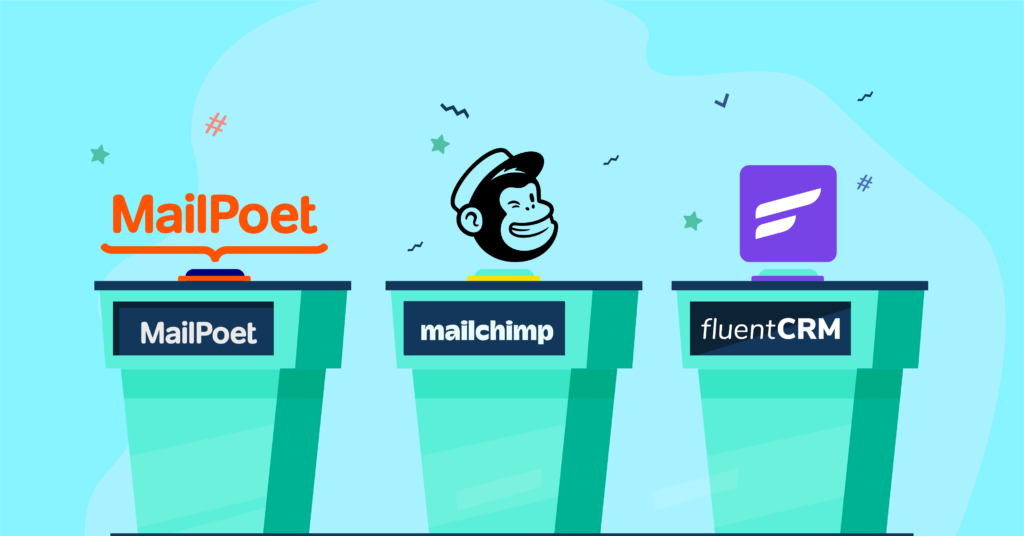
The Definitive Guide to Selling Online Courses in 2024
Online courses are getting tremendously popular around the world. From students to professionals, people are now taking online courses to enhance their knowledge and skills in different subjects.
Statista estimates that the global online learning market will be worth $375 billion by 2026. So, if you didn’t start selling online courses yesterday, today is the high time to do so. In this article, we will provide tips for selling your online course effectively around the world.
Ready to sell your course online?
Let’s start by ensuring you have all the basic stuff to get going!
Considerations Before Selling Online Courses
Creating online courses today is much more than just making a few videos and uploading them to an online course platform or website. So take a look at a few questions you should ask yourself.
| ➔ Do you have the required expertise on the topic? | Your students may ask different kinds of questions. You should be able to answer them. |
| ➔ Do you have a proper course outline? | Well-organized courses are more likely to sell. |
| ➔ Do you have the right gears? | A good camera, microphone, video editing software, etc., are essential for producing good learning experiences. |
| ➔ Do you have scripts for each video? | Don’t just hit record. Scripting makes it easy to produce helpful content. |
| ➔ Do you have a course launch strategy? | A course launch strategy ensures you’re giving your course a head-start by enrolling as many students as possible. |
| ➔ Does your course topic have market demand? | If your course isn’t adding value to people’s lives, there’s no point in making it. |
| ➔ Do you know who your target audience is? | If you know your targeted audience, it will be easy for you to market your course |
If you’ve answered these questions, you’re ready to sell your course online. Let’s jump right into it!
The Components of a Successful Online Course
Online courses differ from writing a blog post. They require thoughtful planning, the creation of quality content, tasks, and interconnected lectures.
An online course is also an asset that your students will be watching for a long time. To keep the students fully attentive throughout the course, each lesson in your course must be packed with both instructive and interesting information.
Multimedia content is common in great online courses, including:
- Video tutorial
- Document
- Slideshow
- Quiz
- Content that can be downloaded (PDF, reports, case studies, etc.)
- Final tests and assignments
So, if you have all the necessary components to sell your course, let’s learn how to make it live now.
Choosing a Course-Sharing Platform
If you have already prepared your course, the next step is to find a platform to sell it. To sell your course, you can use a third-party platform or your website.
Third-party Platform
You can find several online course marketplaces to upload your course and make it available worldwide. Udemy and Skillshare are among the top-rated online course marketplaces that are commonly used.
They will host your course and provide additional support. You do not have to hassle with technical difficulties. However, you have to follow some strict rules, and they may charge up to 50% of your total revenue.
Using a Website
Using your website as a course-sharing platform could be an excellent idea rather than using a third-party platform. There are lots of benefits of using your own website as a course-sharing platform. You’ll be able to run your platform the way you want. No rules and regulations!
If you already have a website, you can sell your course using WordPress LMS plugins. Using WordPress LMS plugins is both budget-friendly and gives the ultimate freedom for selling online courses. However, you must have some basic knowledge about WordPress to prepare your website as a course-sharing platform.
If you want to sell courses from your own website, you can check our quick start guide. Alternatively, you can also hire a developer to get your website done.
Not sure about choosing the right course-sharing platform?
You can check out our comparison between LMS and e-learning platforms.
Course Launch Strategy
You may feel that you’ve perfected the art of a flawless launch, but the truth is, there’s always room for improvement. There are many moving elements to launching an online course, which can be learned and used to ensure success.
However, sending a single email to your list or bombarding Facebook groups you don’t manage with information about your course isn’t a practical approach to selling your course. A solid launch strategy is required.
Here are some methods that successful course creators follow for launching their online courses:
Choose a Simple, Attractive Name
Don’t rush your online course’s naming process. Because this will show up everywhere, think deeply and carefully about the course’s name before finalizing. Just because you like it doesn’t imply your clients will. You want people to know what exactly your course is and the content of the course in just a few words.
Pre-sell Your Course
Instead of wasting days, weeks, or maybe even months making video content for your course and then attempting to sell it, why not test your course value first by pre-selling? Before the course goes live, pre-selling could be a great idea as you’ll be able to see if the crowd is interested in putting their money where their mouth is when it comes to your product.
Test Your Course
Before making your course available publicly, you should test your course first. Look at the overall course and try to find out the flaws. You can get help from your friends and family on this matter. Ask them to see your course and give you some feedback.
Set the Pricing
So, you already have a website ready to launch your course; set the pricing now. Do some research on the market first to set your price. Also, you should take your hard work and the customer’s income level into consideration. This could help you set the right price for your course. Ideal pricing could bring more customers than you can imagine.
Test Your Technical Systems
This is a fairly fundamental suggestion, but we often overlook it. It’s important to check whether the technical part is functioning well or not. Before sharing the course, make sure whatever system you’ve created for your users to use (e.g., course login, course sharing, sales funnel) has been thoroughly tested.
Build Your Email List
Without a doubt, this is the most important suggestion of all, yet it is one that many course creators neglect. If you want to make any sales, you’ll need an audience to launch your product to. Start building your email list of potential buyers as soon as possible!
Offer a Sneak Peek of Your Course
It’s okay to give away up to 15-20% of your course content to your potential students for free to give them an idea of what they’ll get if they join. Free content, such as blog articles, could be used to do this. You can also do this through webinars. You can use email marketing as well or a teaser video on your sales page to do this.
Have a Refund Policy
Course makers are sometimes so focused on making sales that they overlook the possibility that some clients might request a refund. Before you start selling, determine how your refund policy will work and make it apparent to everyone who buys.
Get Feedbacks
Take the time to go over all of the material yourself before you start selling your online course or class. Offering a highly discounted beta edition of your programs in exchange for detailed, real-time feedback from your students is also a fantastic idea. Understanding the viewpoint of your customers will be significant for the next step of your launch.
Promoting Your Online Course
So, you’ve chosen your course-sharing platform, created the course, and launched it with precision. Now it’s time to market your course. This is as important as building your course. If you can’t get people to buy your course, your effort will be in vain.
So let’s look at some strategies for marketing your online course, attracting the right audience, and making it successful.
Build a Landing Page
If you’ve launched your course on an eLearning platform, it will create a landing page for your course. You don’t need to put additional effort into building a landing page.
On the other hand, WordPress LMS plugins automatically create the required pages for you if you’re using one. Besides, your WordPress theme should be able to aid you in creating a very engaging website.
However, while sharing courses on your own website, you’ll have to develop landing pages really fast to outline course details, introduce instructors, promote special offers, and so on. It’s been found that custom landing pages and sales pages boost course sales.
Email Marketing
E-learning platforms have their own way of promoting your course via email marketing. But if you’ve decided to go with a website, you’ve got to put effort into email marketing.
Why?
Most people who visit your website won’t enroll in your online course. The biggest problem is that once they leave your site, you won’t be able to reach out to them ever again.
To overcome this problem, you should grow email lists, send newsletters, run email campaigns, and set up email marketing automation funnels to turn your visitors into students. That said, it’s pretty important to invest in an email marketing tool.
FluentCRM could be the perfect fit for you because it’s free and you can start off your email marketing journey with ease. This excellent email marketing automation plugin helps build and segment email lists into different lists and tags. It has a beautiful and simple user interface that anyone can operate.

Once you’ve started off well, you can get the plugin’s premium version which integrates with popular WordPress plugins like Learndash, LifterLMS, and TutorLMS.
Learn the Basics of SEO
E-learning platforms drive traffic to your course on their own. But you can’t expect people to find your course if you’re hosting your course on a website.
For the majority of websites on the internet, search engines are the main source of traffic. That’s the reason why you need to figure out how to improve the search engine rankings of your online course website. If you follow some basic SEO best practices, you’ll easily be able to drive organic traffic to your website.
Track Marketing Data
A lot of newbies build their marketing strategy based on assumptions. You don’t need to do that when you have access to accurate data to make smart decisions.
Most e-learning platforms do marketing on their own and usually provide a lot of engagement data. But to get marketing data of a website, you can configure tools like Google Analytics. This will provide you with every single detail of your website.
With Google Analytics, you can see where your visitors come to your site, their actions on your site, most visited pages, and more. After that, you can make changes to your website to increase conversions and sales.
Offer Affiliate Bonuses
Sales won’t increase unless you take wise steps. You should upload bonus-paid materials to enhance your revenue. Giving your student a referral bonus could make an enormous difference in sales.
Another great way to boost your sales is to offer course affiliation opportunities for others. You can partner with other entrepreneurs or influencers to promote your course. They’ll promote your course. Although they’ll get a fraction of your revenue in return, it’s still worth it considering the number of students you’ll get.
Upload Success Stories & Collect Testimonials
Keep track of your students and share their success stories to attract other customers. This could work the same or even better than testimonials. So, to get better testimonials and more successful students, you need to improve your course constantly.
Utilize Social Media
Most people are now on social media. So, if you want to grow the number of your students, you should target multiple social media platforms to do that. You should have organized social media accounts to promote your course all over the internet. Also, hiring a marketer to increase your sales could be a great idea. If you’re not sure where to start recruiting, you can look into freelance marketplaces.
Final Words
Selling online courses can be a dominant source of passive income. Also, from the customer’s point of view, it is one of the most accessible sources to gain knowledge and develop skills. So, for the well-being of everybody, we suggest that if you have expert knowledge or skill on something, you should start selling an online course—best of luck!





Leave a Reply